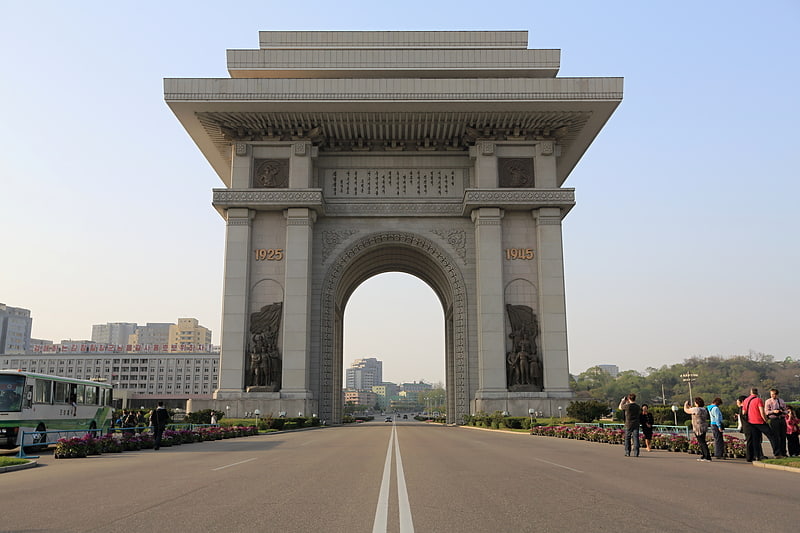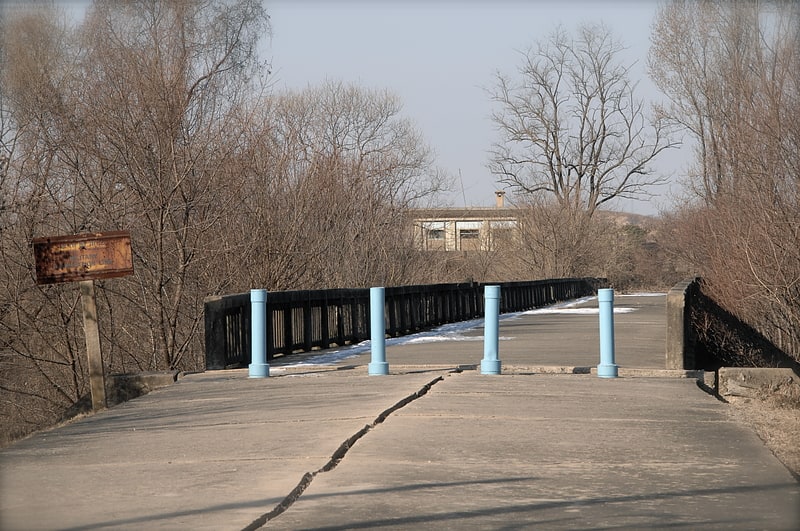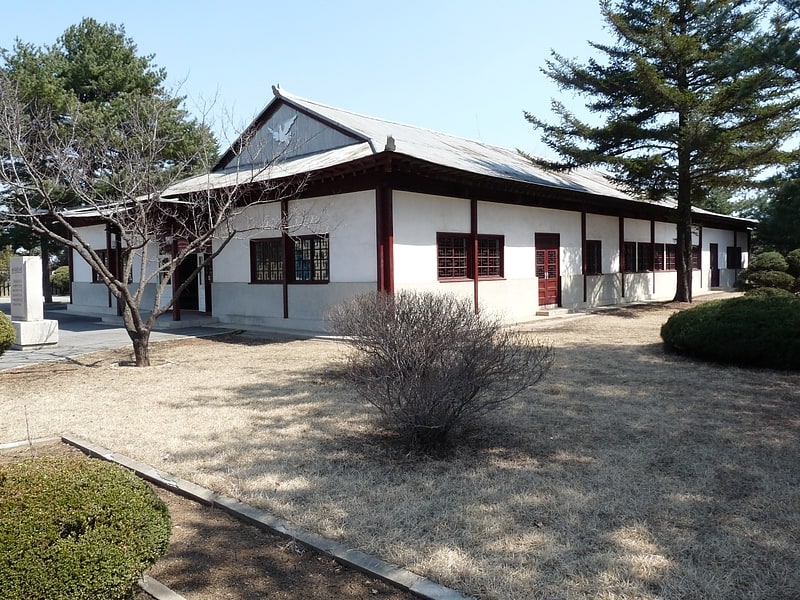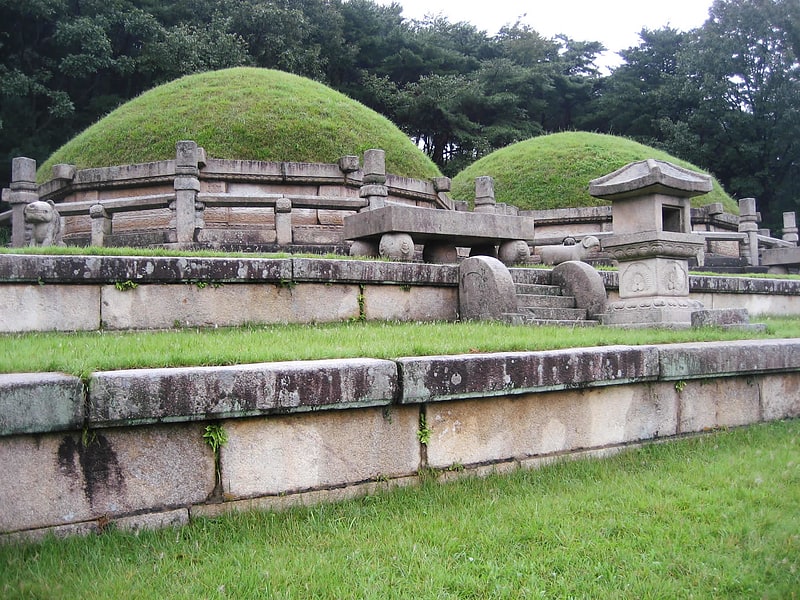Discover 6 hidden attractions, cool sights, and unusual things to do in North Korea. Don't miss out on these must-see attractions: Juche Tower (Pyongyang), Korean Revolution Museum (Pyongyang) or Arch of Triumph (Pyongyang).
Below, you can find the list of the most amazing places you should visit in North Korea.
Table of Contents
Juche Tower, Pyongyang

Also known as: 주체사상탑
Tower inspired by Korean stone pagodas. The Juche Tower, completed in 1982, is a monument in Pyongyang, the capital of North Korea, and is named after the ideology of Juche introduced by the country's first leader, Kim Il-sung.[1]
Address: Downtown Pyongyang, Pyongyang
Korean Revolution Museum, Pyongyang

Also known as: 조선혁명박물관
Exhibitions on the Korean Revolution. The Korean Revolution Museum, located in Pyongyang, North Korea, was founded on August 1, 1948, and holds a large exhibition of items related to Kim Il-sung and the Korean revolutionary movement. It is situated behind the Mansu Hill Grand Monument and is adjacent to the Mansudae Assembly Hall, seat of the Supreme People's Assembly, the North Korean legislature.
The Korean Revolution Museum encompass the period between 1860 and the present day, including the anti-Japanese resistance, the Korean War and the period of socialist construction. It has 90 rooms which hold items related to Kim Il-sung and his associates, Korean reunification, the Korean diaspora, and various historical battles. Since its establishment, it has had 27 million visitors from North Korea and abroad. At 240,000 square metres, it is also one of the largest structures in the world. The museum underwent major renovations which were completed in 2017.[2]
Arch of Triumph, Pyongyang

Also known as: 평양 개선문
Large triumphal arch built in 1982. The Arch of Triumph is a triumphal arch in Pyongyang, North Korea. It was built to commemorate the Korean resistance to Japan from 1925 to 1945. It is the second tallest triumphal arch in the world, after Monumento a la Revolución in Mexico, standing 60 m high and 50 m wide.
Built in 1982 on the Triumph Return Square at the foot of Moran Hill (모란봉) in the North Korean capital city of Pyongyang, the monument was built to honour and glorify President Kim Il-sung's role in the military resistance for Korean independence. Inaugurated on the occasion of his 70th birthday, each of its 25,500 blocks of finely-dressed white granite represents a day of his life up to that point.[3]
Bridge of No Return, Kaesong

Also known as: 돌아오지 않는 다리
Pedestrian bridge. Located in the Joint Security Area, the so-called "Bridge of No Return" crosses the Military Demarcation Line between North Korea and South Korea. It was used for prisoner exchanges at the end of the Korean Armistice in 1953. The name originates from the final ultimatum that was given to prisoners of war brought to the bridge for repatriation: they could either remain in the country of their captivity or cross the bridge to return to their homeland. However, once they chose to cross the bridge, they would never be allowed to return, even if they later changed their minds.
The last time the bridge was used for prisoner exchanges was in 1968, when the crew of USS Pueblo was released and ordered to cross into South Korea via the bridge. The bridge was actively used by the North Koreans up until the Korean axe murder incident in August 1976, at which time the United Nations Command demanded that the Military Demarcation Line within the Joint Security Area be enforced and clearly marked. Within 72 hours, the North Koreans had built a new bridge on the northern half of the JSA and the original Bridge of No Return was no longer used.
The Military Demarcation Line runs through the middle of the bridge. At the end of either side of the bridge are guard houses of the respective countries. The North Korean building is called KPA#4 while the United Nations Command checkpoint was called CP#3. CP#3, which is surrounded by trees, was only visible from one other UNC site during the winter months, OP#5. The North's Korean People's Army had made numerous attempts to grab UNC personnel from the old CP#3 and drag them across the bridge into North Korean territory.
Because of this proximity to North Korean territory, being surrounded on all access routes by North Korean checkpoints, and repeated attempts to kidnap the UNC personnel working there, CP#3 was often referred to as "The Loneliest Outpost in the World". As of 2003, the bridge is considered in need of repair. According to a report on CNN, the US government has offered to fix the bridge or even replace it, but North Korea has denied permission.[4]
North Korea Peace Museum, Kaesong

Also known as: 조선민주주의인민공화국 평화박물관
Building. The North Korea Peace Museum is in the building constructed to house the signing of the Korean War Armistice Agreement on 27 July 1953. It is located in the former village of Panmunjeom in North Hwanghae Province, North Korea.
It is located approximately 1.2 kilometres (0.75 mi) north-west of the Joint Security Area (JSA), in the northern half of the Demilitarized Zone. The building is all that remains of the former village, and since the mid-1950s, references to Panmunjom actually refer to the Joint Security Area itself. It is about 1.9 kilometres (1.2 mi) north-east of Kijong-dong, often referred to as Propaganda Village.
The weapons used to kill U.S. Army Captain Arthur Bonifas and Lieutenant Mark Barrett in the axe murder incident of 1976 are housed within the museum.
There is a symbol of a dove above the door. At the time of the signing of the armistice, a copy of Pablo Picasso's The Dove was hanging inside the building. The Americans objected to it as a symbol of communism (Picasso was a communist), and it was covered up.[5]
Tomb of King Kongmin, Kaesong

Also known as: 현정릉
Historical place in North Korea. The Mausoleum of King Kongmin, more correctly known as the Hyonjongnung Royal Tomb, is a 14th-century mausoleum located in Haeson Village, Kaepung County just outside the city of Kaesong, North Korea. It is one of the Royal Tombs of the Goryeo Dynasty.
The site consists of two separate burial mounds, "Hyonnung", which contain the remains of Gongmin, 31st king of the Goryeo Dynasty, and "Jongnung", which contains his primary wife, the Mongolian princess Budashiri. Nominated for World Heritage status, it is one of the best preserved royal tombs in North Korea which remains in its original state, having avoided extensive restoration under the Communist government.[6]